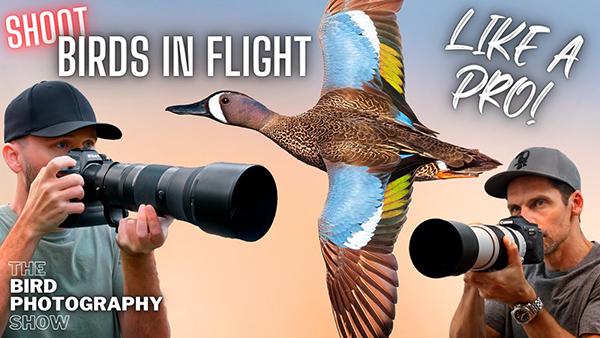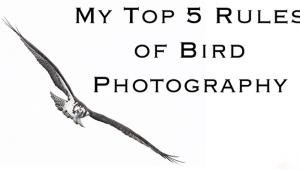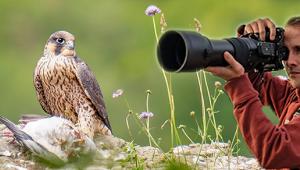There's More to Epic Birds-in-Flight Photos Than Fast Shutter Speeds & Frame Rates (VIDEO)

Most photographers, even beginners, know that capturing images of birds in flight (BIF) requires high shutter speeds and frame rates. But these settings are just the basics, and if you want to shoot truly amazing photos the video below from The Bird Photography Show is just what you need.
Jan Wegener is a professional wildlife photographer based in Germany. In this tutorial he's joined by like-minded pro Glenn Bartley to demonstrate what it truly takes to capture amazing BIF images. They're illuminating conversation covers everything from gear and camera settings to composition, exposure tricks and more.
In addition to high shutter speeds to freeze action, and fast frame rates to maintain these shutter speeds, choosing the right autofocus mode is critically important. Bartley notes that continuous AF tracking is part of the equation and explains why your camera's Eye Detect mode will also make a big difference.

Bartley also places an asterisk on the rule of using the highest frame rate available. That's because depending on the camera you use unacceptable amounts of rolling shutter effects may occur. Wegener concurs and describes the frame rates he recommends when photographing different species of birds. The idea is to capture a variety of wing movements without suffering the consequences of rolling shutter distortion.
Another important consideration when using long lenses with a focus-range limiter, is to choose the setting that's most appropriate for the camera-to-subject distance in your scene. Doing this vastly improves your odds of fast and precise focus acquisition.
All this notwithstanding, correct camera settings don't guarantee great BIF photos. As Bartley says, "There's the settings, and then there's the setting, i.e. the location from which you shoot. First you have to be at a reliable spot with plenty of birds flying back and forth. It's also important to find a vantage point with a clean background that doesn't force you shoot directly into the sun.

Wegener discusses why it's important to understand the behavior patterns of birds you anticipate capturing at different times of day. He notes, for example, that most birds typically take off and land into the wind. Hence, "You want to make sure that your light angle and the wind direction come from the proper direction."
The foregoing is just a smattering of what you'll learn in this informative lesson, and by apply all the very helpful suggestions your BIF photos are guaranteed to improve. There's much more to see on Wegener's YouTube channel, including more videos from The Bird Photography Show. So check to see what's available when you have time.
And don't miss the earlier tutorial we posted from another pro, with four in-camera techniques that deliver epic nature & wildlife photographs with soft, blurry backgrounds.
- Log in or register to post comments















































